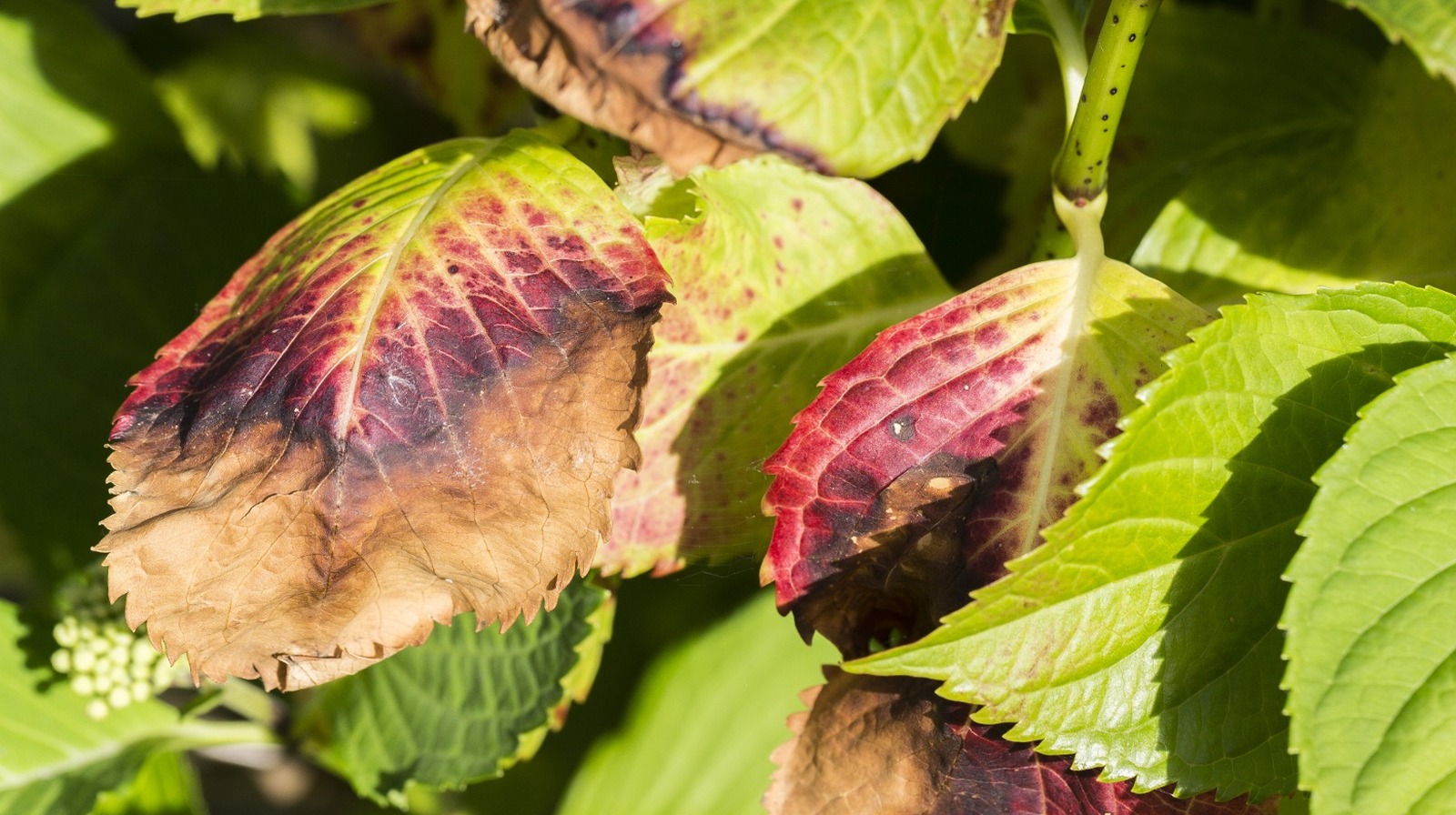Not known Facts About Hydrangea Leaves Turning Yellow
Table of ContentsA Biased View of Hydrangea Leaves Turning YellowAll about Hydrangea Leaves Turning YellowThe Main Principles Of Hydrangea Leaves Turning Yellow The Greatest Guide To Hydrangea Leaves Turning Yellow6 Simple Techniques For Hydrangea Leaves Turning YellowHydrangea Leaves Turning Yellow for Beginners
These issues are easy to identify and fix if you take actions prior to root rot embed in. A wetness meter can assist assist you to the ideal technique of adjustment. Large leaves commonly look saggy during the afternoon warm. When they fail to liven up at night or still look wilted in the early morning, your plant can be overwatered.Eliminate the plant from the dirt and prune out any origins that aren't white and swollen (plump) (Hydrangea Leaves Turning Yellow). Replant in a brand-new area or work some sand into the soil for better water drainage. Underwatering additionally creates entrusts to transform yellow with brown, crunchy sides. Do not attempt to correct the problem by watering exceedingly.

Fascination About Hydrangea Leaves Turning Yellow
First appears on the older fallen leaves, however the leaf blood vessels continue to be eco-friendly. While there is generally enough iron in all-natural soil, hydrangeas frequently struggle to absorb sufficient of it.
The most effective way to avoid iron deficiency-chlorosis in hydrangeas is to grow them in ideal ericaceous or acidic dirt. When growing in a bed, mix in some peat or reduced-peat ericaceous compost and check the p, H worth annually. This is necessary since the garden compost blend around the plants will certainly affect the p, H worth of the soil in the future and the p, H worth might rise once more.

Hydrangea Leaves Turning Yellow Can Be Fun For Anyone
September is the best time of year to do something about those hydrangeas. Their leaves are transforming yellow, the blossoms have actually faded, and their gangly look is making you crazy.
Currently to face the remaining hedge, not a quite view as winter months strategies. Mophead, Lacecap and Oakleaf hydrangeas bloom on old timber. What that means is they will flower next year on wood that was developed this year. Clicking Here Do not prune Mophead, Lacecaps and Oakleaf hydrangeas to the ground, as you will certainly remove the stems that prepare to bloom next springtime.
That way you will not be removing as well our website numerous of next year's blossom buds. If the bush is obtaining bigger than you like, you can take out a third of the real-time wood while you're in there.
9 Simple Techniques For Hydrangea Leaves Turning Yellow
We're right in the middle of our late-blooming hydrangea season below, so I believed I 'd share a tip for this specific kind of hydrangea that I discovered actually fascinating. A whole lot of individuals have a similar concern with their panicle hydrangeas where they start to see the leaves turning yellow and handing over at various parts of the period and it can be quite remarkable and pretty worrying because it can take place truly quickly on a hedge that seems like it's or else truly healthy and balanced.
I have actually shared it on Instagram prior to, however I realized I have actually never ever informed you regarding this in a real, complete post, so today I'm looking after that. When I claim that this relates to panicle hydrangeas, that suggests the sort of hydrangeas that normally flower later in summer season, generally around August.
Where we reside in zone 6, they're quite easy to have success with and they're actually preferred in our area, which is great since that implies that there are hydrangeas practically anywhere currently of year. When you see your hydrangea leaves starting to turn yellow, you may assume that your plant is dying or being maltreated somehow, however in fact, the opposite is real.
See This Report about Hydrangea Leaves Turning Yellow

Courtenay is the author of guide The Cleansing Ninja and useful site has been included in countless publications consisting of Country Sampler Farmhouse Design, Better Residences and Gardens, Parents Magazine, Real Simple, and Our Residences.
Waterlogged soil denies the origins of oxygen, bring about root rot and yellow fallen leaves. On the various other hand, underwatering or dehydration creates the plant to shrivel and its vegetation to yellow. Maintaining a regular watering timetable and making certain appropriate water drainage with drainage openings or layers can aid stop these issues.
More About Hydrangea Leaves Turning Yellow
Consistently inspect the soil acidity, and readjust as needed to maintain the optimum p, H degree for hydrangeas. With proper care and upkeep, hydrangeas can prosper and maintain their vivid, vivid fallen leaves. Hydrangea leaves transforming yellow is a typical issue that can be credited to various aspects. One of the key factors is inappropriate watering, as hydrangeas need consistently damp dirt to thrive.
The type of yellowing seen (e. g. the position of the affected leaves on the plant, and/or the pattern and setting of the yellowing on the fallen leave itself) will certainly typically differ according to the reason. The chlorosis is frequently accompanied by other signs and symptoms offering more ideas regarding the reason, e.Instances include sap-sucking bugs such as aphids, red crawler mites and whiteflies, and origin feeders such as creeping plant weevil and cabbage root fly. Once once again it is frequently feasible to discover the culprit on the leaves or amongst the roots.